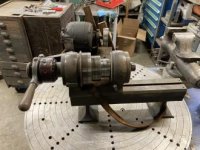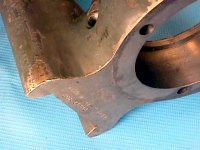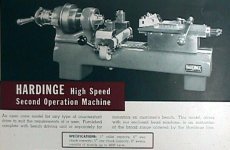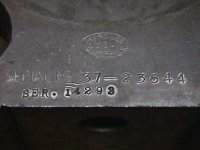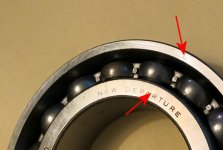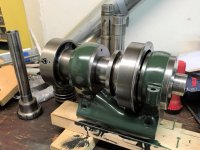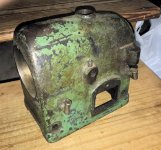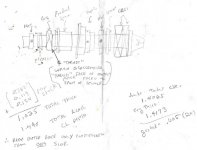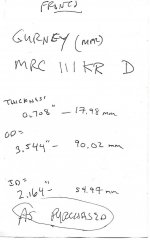jkopel,
That's a nice disassembly description for these ball bearing headstocks. Thanks! I wish I had seen one like yours to look at when I took my headstock apart years ago!
The reason you didn't see any difference when you tightened the rear ring is probably because that ring was tightened against the ring ahead of it and they couldn't move together to take out any slop in the front bearings. When they are not tightened together, the forward ring is tightened as much as possible to push the two front bearing inner races together metal-to-metal, and partially set the bearing preload. Then the aft ring is tightened against the forward ring to keep the two in position. When the front bearing retainer is clamped in position with the proper gasket thickness as noted by Jim, then the outer bearing races are clamped metal-to-metal, and the proper bearing preload is set. The gasket thickness has to be such that it allows the bearing races to be clamped metal-to-metal and not allow the retainer to bend.
I have a ball bearing headstock like yours, SN 59-16400, so it's slightly older but made the same. It came with the threaded nose spindle but I swapped a 5C tapered nose spindle into it. Mine had grease in both sets of bearings, although it had an oil fitting like yours in the front. But considering it's age, who knows what had been done to it. The rear bearing was dry like yours, though. I cleaned up the bearings and put grease in both sets, and it runs just fine.
On a set of similar bearings I have the match marks look like little polished circles that you can see if you get the light just right. They are on the "open" side of the angular contact bearings, the side that has the thinnest outer ring thickness. Here's a picture showing them. They are pointed to by the arrows and are hard to see. Your bearings may or may not have the same type of match marks, and I may be telling you something you may already know.
Unless you already did this, it would have been nice to put match marks on the inner races of the bearings and on the spindle so you can put them together in the same orientation. The same goes for the outer races and the housing.
BTW, here's a picture of my headstock. The spindle I put into it came out of an enclosed headstock. Larry mentioned the 3C, 4C. and 5C spindles all fit into the same ball bearing headstock, and in addition it seems the "ball bearing" spindles of the enclosed and open headstocks all fit together. And I've had a little Hardinge BB4 mill apart, and it has the same spindle as the enclosed headstock, so all of the "ball bearing" spindles of the these open and enclosed lathe headstocks will fit into those mills. It's just when you get into the enclosed lathe headstocks that don't have the brake spring boss on the top and the drive belts in the middle that you lose the interchangeability. You can see the write up on headstocks on Tony's Cataract pages (
Cataract Lathes) to see what I'm talking about as far as the enclosed headstocks are concerned.
Here's a picture of the enclosed headstock from which I took the spindle in my headstock.
Irby
